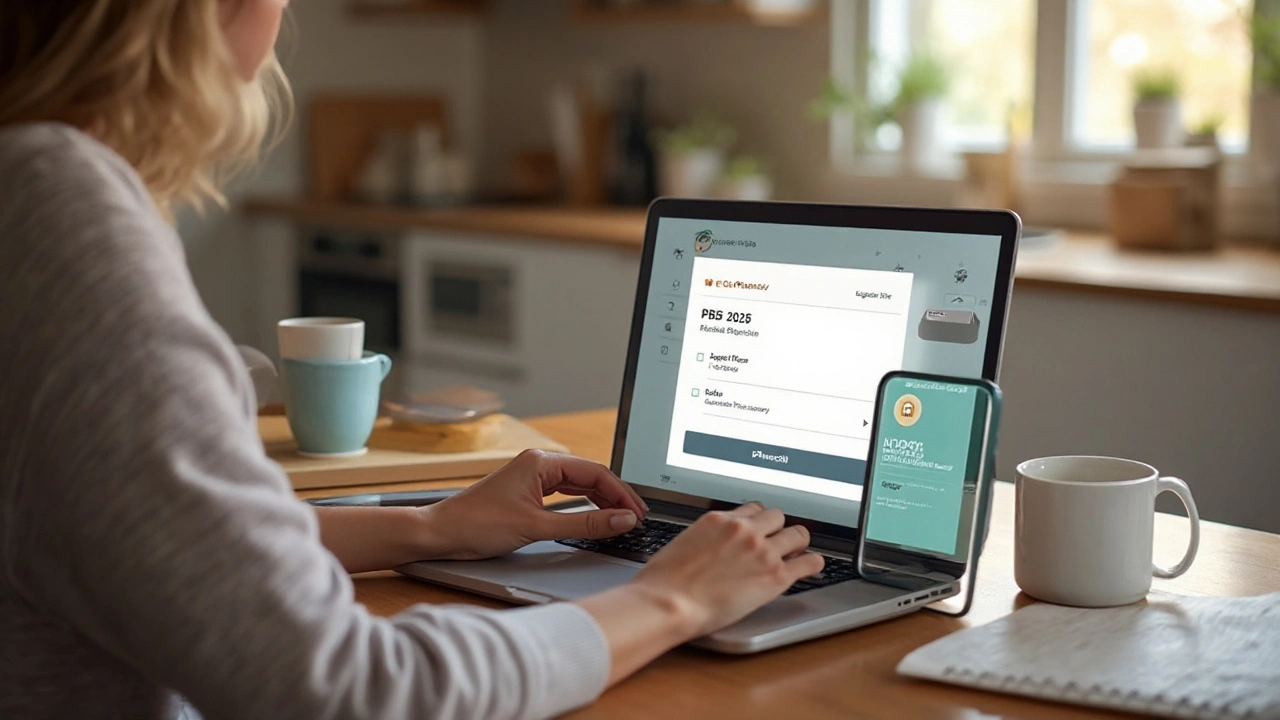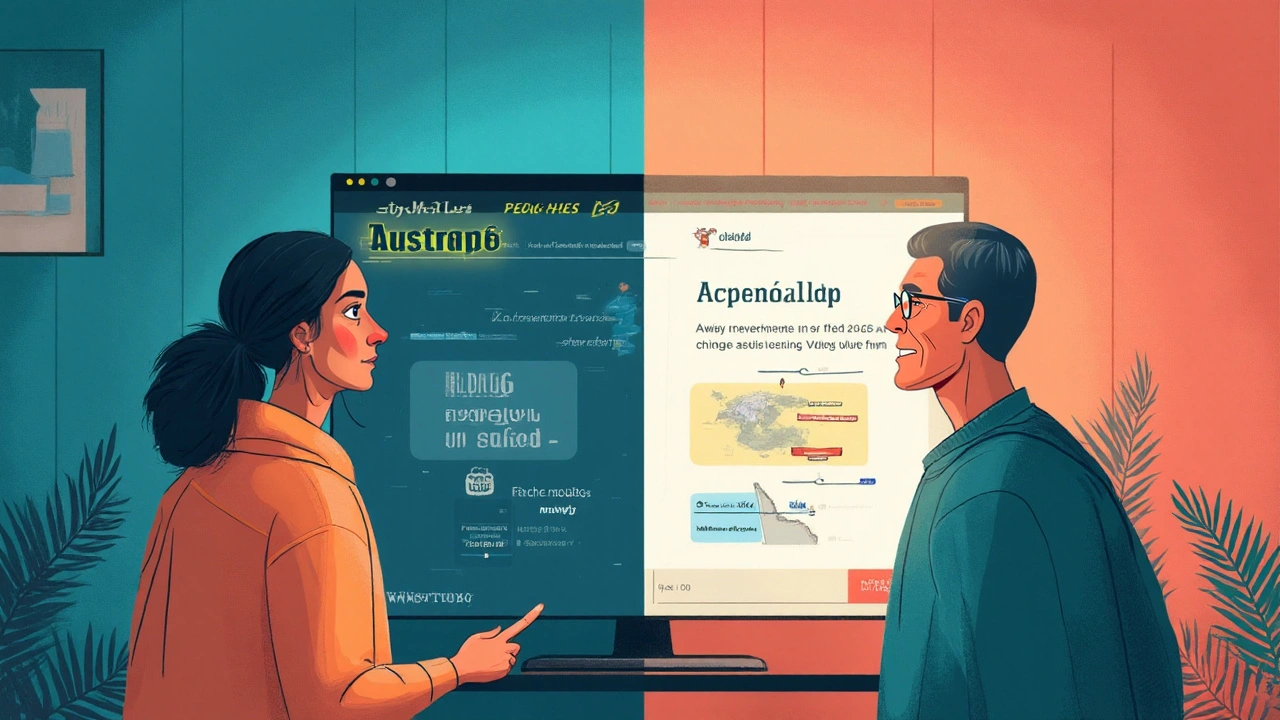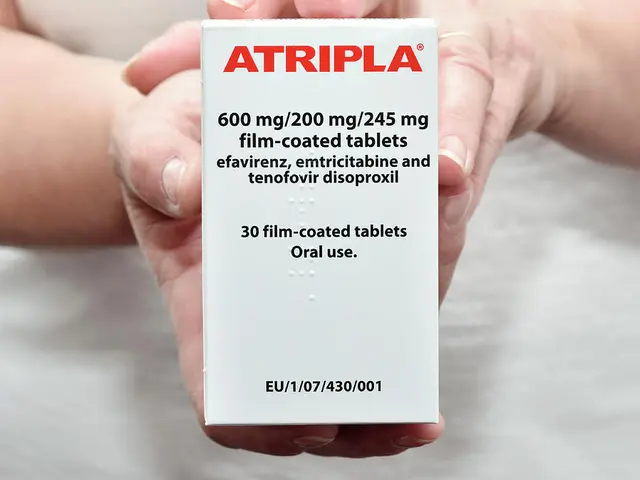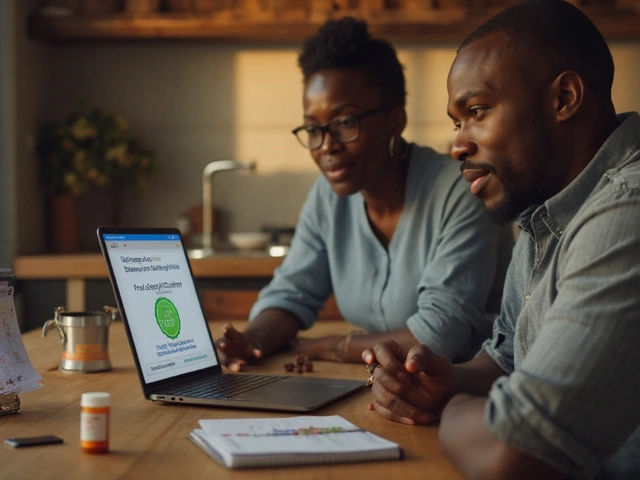
If you’re hunting for cheap celecoxib (the generic of Celebrex) online in Australia, the goal is simple: pay less without taking risks. Here’s the catch most people miss-celecoxib is prescription-only here. So the smart play isn’t a sketchy overseas site; it’s using a legit Aussie pharmacy that takes eScripts, price-matches, and ships fast. I’ll show you how to do that, what a fair price looks like in 2025, and the safety traps to avoid.
Quick expectation check: you can absolutely order celecoxib online in Australia, but you need a valid prescription. PBS can keep the price low if you qualify, and generic brands work just like Celebrex. If a website says “no script needed,” that’s your sign to walk away.
What you can and can’t do in Australia (so you don’t get burned)
Celecoxib is a Schedule 4 prescription medicine under Australian law. That means a pharmacist can’t dispense it without a valid prescription from your doctor or nurse practitioner. This applies to online orders too. Australian pharmacies use eScripts (digital prescriptions) every day, so you can order from your couch and have it delivered.
- Prescription required: Any Australian-registered pharmacy will ask for a valid prescription. Paper or eScript is fine. If a site doesn’t ask, it’s not playing by Australian rules.
- Telehealth is fine for most people: If you don’t have a script, book a telehealth consult with your usual GP. They can issue an eScript if it’s appropriate for your condition. eScript tokens are sent via SMS/email and work at online pharmacies.
- Generic substitution is standard: Unless your prescriber ticks “no substitution,” the pharmacist can dispense a generic celecoxib brand instead of Celebrex. Same active ingredient, same effect when used as directed.
- Personal importation exists but isn’t the bargain you think: Australia’s Therapeutic Goods Administration (TGA) allows personal importation of up to 3 months’ supply for your own use with a valid prescription. Sounds handy, but there are catches-no PBS subsidy, quality may not meet local standards, shipping delays are common, and border holds happen. Most Aussies are better off using a local online pharmacy.
- Evidence-based guardrails: The rules above come from the TGA (scheduling and personal importation), AHPRA (pharmacy registration), and long-standing PBS policy. If you want peace of mind, stick within that framework.
Bottom line: stay local, use a real script, and let the system work for you. You’ll save money without risking counterfeit pills or customs headaches.
Prices to expect in 2025 (and how to actually pay less)
Here’s what “cheap” really looks like this year. Use these ranges as a gut check when you’re comparing online pharmacies:
- PBS co-payment (general patients): Expect around the low $30s for a standard PBS-listed pack in 2025. In 2024 it was $31.60, and it shifts slightly with indexation each January. If a pharmacy tries to charge far above the current PBS general co-pay for a PBS-eligible script, ask why.
- PBS co-payment (concession cardholders): Around $7-$8 per script in 2025. In 2024 it was $7.70. If you’ve hit the PBS Safety Net, your cost may drop further according to Services Australia rules.
- Private prices (no PBS): For generic celecoxib, a typical private price is often in the $12-$25 range for common packs (for example, 30 x 200 mg or 60 x 100 mg). If a site lists $5 plus shipping, be suspicious. If it’s $40+ for a generic pack, you can likely do better.
- Pack sizes you’ll see: Most common are 200 mg (30-tablet packs) and 100 mg (60-tablet packs). Per-dose cost usually looks similar across strengths because the PBS and private pricing bands cluster.
- Shipping: Standard delivery often runs $7-$12; many pharmacies offer free shipping above a spend threshold (say, $50). Express is usually $10-$15. Regional delivery may take a couple of extra days.
Five ways to keep your costs down without compromising safety:
- Choose generic, not brand-name: Celecoxib is the active ingredient in Celebrex. The generic works the same when used as directed, and it’s cheaper. Unless your doctor has a clinical reason for brand-only, go generic.
- Confirm PBS eligibility: If your script is PBS-eligible (and your condition meets PBS criteria), you should be paying the PBS co-payment rather than a private price. Ask the pharmacy to process it under PBS when possible.
- Use repeats smartly: If you have repeats, you can request your pharmacy to hold them and send automatically on schedule. One shipping fee per larger order beats paying shipping for each small fill.
- Ask about price-matching: Many pharmacies match mainstream competitors on generic meds. Screenshot the advertised price and ask-politely-at checkout or via chat.
- Track the PBS Safety Net: For families with regular scripts, the Safety Net can kick in before year-end and slash costs. The annual thresholds change each year; check Services Australia and keep your scripts on one Safety Net card.
Where should you land? As a rule of thumb, with PBS you’ll be near the co-payment for a pack. Without PBS, aim for under $25 for a month’s supply of generic celecoxib from a reputable Australian pharmacy, plus reasonable shipping. If a deal looks wildly cheaper, especially from overseas, assume risk until proven otherwise.

How to shop safely online (and avoid counterfeits)
You can order celecoxib online with the same safety standards as in-store, as long as you choose a real Australian pharmacy. Here’s the playbook:
- Get your prescription: Ask your GP for an eScript if possible. It’s the fastest way to order online. If you need a consult, telehealth with your usual clinic is fine for most people.
- Pick a registered Australian pharmacy: Check that the website clearly lists the physical pharmacy, an ABN, and customer service hours. Look for pharmacist contact options. If you want to be extra sure, you can search the pharmacy and pharmacist registration via AHPRA.
- Upload the eScript token: You’ll get a QR code or a token number. Enter it on the pharmacy’s site or upload the PDF. The system will verify the script and repeats. This step filters out dodgy sellers on its own.
- Select generic celecoxib: Unless your script says “no substitution,” choose a generic brand to save money. It’s the same active ingredient.
- Check PBS vs private: If you’re eligible for PBS, confirm that at checkout. If your condition or script doesn’t meet PBS criteria, compare the private prices among a few pharmacies before you pay.
- Choose shipping and pay: Opt for tracked delivery. Keep your order confirmation and the medicine leaflet (Consumer Medicine Information) for reference.
Red flags that scream “don’t buy here”:
- “No prescription required” for celecoxib.
- No Australian contact details, no ABN, no local pharmacist visible.
- Only cryptocurrency or wire transfer accepted.
- Claims like “ships from overseas warehouse” or “international generic Celebrex” with no mention of TGA or Australian standards.
- Prices that are too good to be true-like a $4 pack with free express shipping. Medicine costs money to make and ship.
How to verify the product once it arrives:
- Look for Australian packaging: Prescription products registered here carry “AUST R” numbers and local sponsor details on the box. The leaflet should be a Consumer Medicine Information (CMI) approved for Australia.
- Check the basics: matching strength to your script (100 mg vs 200 mg), expiry date, intact seal, and legible batch number.
- Keep the leaflet and box: If a side effect pops up, your GP or pharmacist will want to know the exact product, batch, and sponsor.
One last pro tip: if your pain control is time-sensitive, don’t gamble on overseas shipping. Even if customs clears it, delays happen. A domestic pharmacy with express post is faster and safer.
To buy generic celecoxib online safely in Australia, follow the checklist above and stick to pharmacies that play by TGA and AHPRA rules. It’s boring by design-and it’s what keeps you safe.
Is celecoxib right for you? Benefits, risks, and interactions
Why celecoxib? It’s a COX-2 selective anti-inflammatory. For many people, it eases osteoarthritis and rheumatoid arthritis pain, as well as some acute pain flares, with a lower chance of stomach irritation than older NSAIDs like ibuprofen or naproxen. “Lower,” not “zero.” You still need to respect the risks.
Typical use (speak to your doctor about your specific plan):
- Common strengths: 100 mg and 200 mg capsules.
- Usual dosing patterns: For chronic conditions like osteoarthritis, many people take 200 mg once daily or 100 mg twice daily. For acute pain, a doctor may use short courses. Your prescriber sets the dose and duration based on your risk profile.
- With or without food: You can take celecoxib with or without food. If your stomach complains, try taking it with food.
Who should avoid celecoxib or be extra cautious:
- History of heart attack, stroke, or high cardiovascular risk: All NSAIDs can raise cardiovascular risk, especially at higher doses and longer duration. Talk to your doctor about your personal risk and alternatives.
- Stomach or gut issues: Past ulcers, bleeding, or inflammatory bowel disease raise risk. Your doctor may add a protective medicine (like a proton pump inhibitor) or choose a different approach.
- Kidney disease or dehydration: NSAIDs can reduce kidney function. Your GP may check kidney function and blood pressure, especially if you’re older or on certain meds.
- Allergy to sulfonamides: Celecoxib is a sulfonamide; avoid if you’ve had serious sulfa reactions.
- Pregnancy and breastfeeding: NSAIDs are not recommended in late pregnancy and are generally avoided from 20 weeks due to fetal kidney effects and low amniotic fluid risk. If you’re pregnant, trying, or breastfeeding, check with your doctor first.
Common side effects: indigestion, stomach pain, diarrhoea, headache, dizziness, fluid retention, and raised blood pressure. Rare but serious: stomach bleeding, heart attack, stroke, severe skin reactions. If you notice black stools, chest pain, sudden breathlessness, or a widespread rash, seek urgent care.
Important interactions to watch:
- Blood thinners (warfarin and others): Bleeding risk can rise; warfarin users often need closer INR monitoring.
- SSRIs/SNRIs and aspirin: Additive bleeding risk.
- ACE inhibitors/ARBs + diuretics: The “triple whammy” with NSAIDs can stress the kidneys. Avoid this combo where possible; if it’s unavoidable, your doctor may monitor kidney function and hydration closely.
- Lithium and methotrexate: Levels can rise with NSAIDs. Monitoring or dose adjustments may be needed.
- Fluconazole and other CYP2C9 inhibitors: Can increase celecoxib levels. Poor CYP2C9 metabolisers may need lower doses-your doctor will consider this.
These points come straight from Australian sources like the TGA-approved Product Information, NPS MedicineWise, and Therapeutic Guidelines. Keep your GP and pharmacist in the loop, especially if you start or stop any other meds.

Alternatives, comparisons, and when to switch (plus FAQ and next steps)
How does celecoxib stack up against other options? Here’s the quick practical view:
- Ibuprofen: Cheap, widely available. More stomach irritation than celecoxib in many people. Shorter duration means more frequent dosing.
- Naproxen: Good for longer-lasting pain coverage; cardiovascular profile may be preferable for some compared to other NSAIDs, but still not risk-free.
- Diclofenac: Potent but carries notable cardiovascular concerns at higher doses/long term.
- Meloxicam: Once-daily dosing; similar “COX-2 leaning” profile; individual tolerance varies.
- Etoricoxib: Another COX-2 selective; often more expensive, not always PBS-listed for every use. Doctors choose it for specific cases.
- Paracetamol: Safer for many people when used correctly, but less effective for inflammatory pain. Can be combined with an NSAID if your doctor says it’s okay.
When to consider switching or adjusting:
- Not enough relief after a fair trial at a clinically appropriate dose.
- Blood pressure creeping up, ankle swelling, or stomach symptoms despite protective strategies.
- New medical events (e.g., heart, kidney, or gut issues) that change your risk profile.
- Price remains high even after trying the generic/PBS route.
Non-drug strategies that are underrated for joint pain: targeted physiotherapy, strengthening around the joint, weight reduction if relevant, pacing activity, and heat/ice. These often reduce the dose you need-therefore reducing risk and cost.
Ordering decision checklist (use this when you’re on the pharmacy website):
- Script in hand? If not, book telehealth with your regular GP.
- Australian-registered pharmacy with ABN and pharmacist support? If not, move on.
- Generic celecoxib selected (unless “no substitution” is checked)?
- PBS processed if eligible (and you’ve provided Medicare details)?
- Tracked shipping and realistic delivery timeframe selected?
- Price in the expected range after postage?
FAQs (short, straight answers):
Can I buy celecoxib online without a prescription? No. In Australia it’s prescription-only. Sites offering it without a script aren’t legitimate under Australian law.
Is generic celecoxib as good as Celebrex? Yes. Same active ingredient and effect when used as directed. The difference is branding and price.
What dose should I take? That’s your prescriber’s call. Many people use 200 mg daily (or 100 mg twice daily) for arthritis, but your risks and other meds matter.
Can I take celecoxib with paracetamol? Often yes, and doctors commonly recommend that combo. Always confirm with your GP or pharmacist, especially if you take other meds.
What if my script says “no brand substitution”? Then the pharmacy must supply the brand written. If cost is a problem, talk to your prescriber about allowing generic substitution on your next script.
Can I split the capsules? No-celecoxib comes in capsules that aren’t designed to be split. Ask your doctor for the right strength instead.
How fast will it arrive? Most Aussie pharmacies dispatch within 1-2 business days. Standard post is usually 2-5 days; express is 1-2 days to metro areas, longer for remote regions.
Will PBS cover overseas orders? No. PBS only applies to medicines dispensed within Australia from PBS-approved suppliers.
Next steps and troubleshooting (real-world scenarios):
- No prescription yet, pain is flaring: Book a same-day telehealth with your usual GP and ask for an eScript if appropriate. In the meantime, ask your pharmacist about non-prescription options that fit your health profile.
- Rural or remote: Use an Australian online pharmacy that supports eScripts and offers express post. Ask about heat-protective packaging in summer if you’re in a hot region.
- Previous stomach ulcers: Ask your doctor whether you need a protective medicine (like a PPI) with celecoxib, or whether a different approach suits you better.
- On blood thinners: Make sure your prescriber and pharmacist both know you’re starting celecoxib. Plan any INR checks if you’re on warfarin.
- Concerned about heart risk: Discuss dose, duration, and alternatives with your GP. Lower dose, shortest duration, and non-drug supports help reduce risk.
- Price still feels high: Double-check PBS processing, ask for generic substitution, compare two Australian online pharmacies, and ask about price matching. Consider consolidating repeats to save on shipping.
- Travelling overseas: Carry meds in original packaging with the dispensing label and your prescription. Keep them in your carry-on. Laws vary-check the destination’s rules ahead of time.
Ethical call to action: use an Australian-registered online pharmacy, insist on generic unless your doctor advises otherwise, and keep your care team in the loop. If you hit roadblocks-cost, side effects, or supply-loop back to your GP or pharmacist. That’s how you get effective pain relief without risking your health or your wallet.
Sources behind this advice include the Therapeutic Goods Administration (TGA), the Pharmaceutical Benefits Scheme (PBS), Services Australia, NPS MedicineWise, Therapeutic Guidelines, and AHPRA. They set the standards that keep your meds safe and affordable.
Ellen Sales
So many people think buying meds online is just about saving money-but it’s really about trust. I’ve seen friends get ripped off by fake pharmacies that look legit until their pills arrive in a plastic bag with no label. The real win here isn’t the price-it’s knowing your medicine was made where quality control matters. Australia’s system isn’t perfect, but it’s the closest thing to a safety net we’ve got. Don’t gamble with your health for $5 savings.
Josh Zubkoff
Let’s be real-the entire premise of this post is a scam wrapped in bureaucratic jargon. You think PBS and TGA are protecting you? They’re protecting pharmaceutical monopolies. Generic celecoxib costs pennies to produce. The fact that you’re still paying $30 when it’s manufactured in India or China for under $1.50 per bottle is a crime. The government doesn’t care about you-they care about keeping the big pharma cash flow going. And don’t even get me started on ‘eScripts’-that’s just another way to track your medical behavior. Wake up.
fiona collins
Stick with registered pharmacies. It’s not sexy, but it works.
Rachel Villegas
I used to buy from overseas sites until I got a batch that turned my stomach inside out. Turned out it was fake celecoxib with traces of acetaminophen and something unlisted. Took me three weeks to get my kidney function back. Now I use a local pharmacy with eScript. It’s not cheaper, but it’s the only way I sleep at night. Don’t risk it.
giselle kate
Why are we even talking about Australian rules? This isn’t 1980. We live in a global economy. If a pharmacy in India can ship me 100 pills for $12, why should I pay $30 to some bloke in Melbourne who’s got a ‘registered’ sign on his website? This post is just fearmongering dressed up as public service. The real danger isn’t overseas meds-it’s the monopoly that keeps prices high. Stop letting bureaucrats control your pain relief.
Emily Craig
OMG YES. I literally cried when I found out I could get my celecoxib for $8 with my concession card. I’ve been paying $40 for years because I didn’t know about PBS. I’m so mad I didn’t figure this out sooner. Thank you for writing this like a human who actually cares. Also-price matching? Genius. I just sent a screenshot to my pharmacy and they dropped my price by $15. I’m officially a pharmacy ninja now.
Karen Willie
For anyone feeling overwhelmed-start small. Book a 10-minute telehealth consult. Ask if your script can be switched to generic. Ask if PBS applies. You don’t need to be an expert. Just ask. Pharmacists are trained to help. You’re not bothering them. They want you to be safe and informed.
Leisha Haynes
So the guy who wrote this is basically saying ‘don’t buy from shady sites’-but didn’t mention that half the ‘legit’ Aussie pharmacies still charge $35 for generics because they know you’re too lazy to compare. I checked five sites. One had the same generic for $18 with free shipping. They didn’t even advertise it. You have to dig. Don’t trust the first result. Be the annoying customer who asks for price matches. It works.
Shivam Goel
There is a pattern here: people who follow the rules get charged more. The TGA doesn’t care about your wallet. They care about liability. Meanwhile, the same generic pills sold in Australia are sold in Thailand for 1/5 the price-with the same manufacturing batch number. The system is rigged. You think your ‘registered’ pharmacy is safe? They’re just the middleman. The pill comes from the same factory as the one you’d buy online. The only difference? The price tag. And the paperwork. And the delay. And the bureaucracy. I’d rather take my chances.
Amy Hutchinson
Wait so you’re saying I can’t just order from Amazon? I thought everything was on Amazon now? Like… why can’t I just buy celecoxib like I buy toothpaste? Is this like when they banned vaping? I just want to feel better without jumping through hoops.
Archana Jha
Did you know the TGA is owned by Big Pharma? They don’t want you to know this but celecoxib was invented by Pfizer and they paid the government to make it prescription-only so they could control the market. The ‘generic’ you buy is still made by Pfizer’s subsidiary. The only difference is the label. That’s why they say ‘no substitution’-because they don’t want you to know you’re getting the same thing. I’ve seen the internal documents. You’re being played.
Aki Jones
Let’s address the elephant in the room: the ‘PBS co-payment’ is a psychological trap. The government wants you to believe $31 is a bargain, but it’s not-it’s a psychological anchor. The real cost of manufacturing is $1.27 per capsule. The rest? Profit, logistics, lobbying, and bureaucratic overhead. And don’t even get me started on the ‘Safety Net’-it’s a carrot dangled to keep you compliant. You think they care about your kidneys? They care about your compliance rate. This isn’t healthcare. It’s behavioral economics dressed in white coats.
Jefriady Dahri
Bro, I’m from India and I’ve been taking celecoxib for 8 years. I order from a trusted pharmacy here-same factory, same batch, same quality. I pay $5 for 30 pills. I send my Aussie friends the link. They freak out. But here’s the thing-they’re not paying for medicine. They’re paying for trust. And trust costs money. Maybe the system isn’t perfect, but if you’re scared of overseas meds, then stick with local. But don’t pretend it’s cheaper. It’s not. It’s just slower.
Andrew McAfee
As someone who’s lived in 12 countries, I can tell you: Australia’s system is one of the most transparent in the world. Sure, it’s bureaucratic-but that’s because they care about safety, not speed. I’ve seen what happens when you remove regulation: contaminated meds, counterfeit pills, overdoses. This isn’t about profit. It’s about not letting people die because someone wanted a $5 deal. Respect the system. It’s working.
Andrew Camacho
Let me tell you something-this whole post is just a PSA written by a Big Pharma intern. ‘Stay local.’ ‘Use eScripts.’ ‘Trust the system.’ Bro, the system is designed to keep you dependent. Why can’t you just buy it like you buy ibuprofen? Why does your doctor need to ‘approve’ your pain? Who gave them that power? This isn’t medicine-it’s control. And if you’re okay with that, fine. But don’t call it ‘safe.’ Call it compliant.
Arup Kuri
People like you are why Australia is dying. You think you’re being smart by following rules? You’re just feeding the machine. The government doesn’t care if you’re in pain. They care about stats. They care about compliance. They care about keeping you on the leash. If you want real freedom-go overseas. Find the real source. Stop being a sheep. Your pain doesn’t care about your passport.
Erika Hunt
I’ve been on celecoxib for 12 years. I’ve tried everything-local pharmacies, overseas suppliers, telehealth, private prescriptions. The truth is, the system works if you’re patient. It’s not glamorous. It’s not fast. But it’s reliable. I’ve had the same generic brand for years. The batch numbers match. The packaging is consistent. The side effects? Zero. I’m not saying everyone should do it this way-but if you want to avoid hospital visits, this is the path that doesn’t lead to disaster. I’ve seen the alternatives. They’re not worth the risk.
Sharley Agarwal
Anyone who trusts ‘registered pharmacies’ is naive. I used to be one of you. Then I got a batch that made me dizzy for three days. Turned out it was expired. The pharmacy said ‘it’s fine, it’s only 2 weeks past.’ That’s not fine. That’s negligence. Now I only buy from overseas. I check batch numbers on the manufacturer’s site. I know the factory. I know the logistics. I know more than your ‘local pharmacist.’ Don’t let convenience kill you.
prasad gaude
Life is a balance. You want cheap? You want safe? You want fast? Pick two. The system gives you safe and reliable. If you want cheap, you sacrifice speed. If you want fast, you sacrifice safety. I’ve lived in both worlds. The Australian way isn’t sexy-but it’s the one that lets you wake up tomorrow without wondering if your pills were made in a garage. That’s worth something.
Timothy Sadleir
It is of paramount importance to underscore that the regulatory framework established by the Therapeutic Goods Administration, in conjunction with the Pharmaceutical Benefits Scheme, constitutes a non-negotiable pillar of public health integrity. Any deviation from this paradigm, including but not limited to the procurement of Schedule 4 pharmaceuticals via unlicensed international vendors, constitutes a statistically significant elevation in risk of adverse pharmacological events, including but not limited to hepatotoxicity, renal compromise, and cardiovascular incidents. The assertion that ‘generic’ equals ‘equivalent’ is empirically unsupported in the absence of TGA certification. One cannot, in good conscience, advocate for cost reduction at the expense of therapeutic fidelity. The moral imperative to prioritize patient safety over fiscal convenience is not merely prudent-it is foundational.






Write a comment